1. Nambi V, Chambless L, Folsom AR, He M, Hu Y, Mosley T, et al. Carotid intima-media thickness and presence or absence of plaque improves prediction of coronary heart disease risk: the ARIC (Atherosclerosis Risk In Communities) study. J Am Coll Cardiol. 2010; 55:1600–1607. PMID:
20378078.
2. Cao JJ, Arnold AM, Manolio TA, Polak JF, Psaty BM, Hirsch CH, et al. Association of carotid artery intima-media thickness, plaques, and C-reactive protein with future cardiovascular disease and all-cause mortality: the Cardiovascular Health Study. Circulation. 2007; 116:32–38. PMID:
17576871.
3. Øygarden H. Carotid intima-media thickness and prediction of cardiovascular disease. J Am Heart Assoc. 2017; 6:e005313. PMID:
28110312.

4. Zanchetti A, Hennig M, Hollweck R, Bond G, Tang R, Cuspidi C, et al. Baseline values but not treatment-induced changes in carotid intima-media thickness predict incident cardiovascular events in treated hypertensive patients: findings in the European Lacidipine Study on Atherosclerosis (ELSA). Circulation. 2009; 120:1084–1090. PMID:
19738145.
5. Kwon HJ, Park JH, Lee JH, Jeong HS, Song HJ, Kim J, et al. Low common carotid artery systolic occlusion pressure and symptomatic carotid artery stenosis are associated with development of neurologic intolerance during proximal protected carotid artery stenting. Korean Circ J. 2018; 48:217–226. PMID:
29557108.

6. Dwivedi A, Al'Aref SJ, Lin FY, Min JK. Evaluation of atherosclerotic plaque in non-invasive coronary imaging. Korean Circ J. 2018; 48:124–133. PMID:
29441745.

7. Bots ML, Groenewegen KA, Anderson TJ, Britton AR, Dekker JM, Engström G, et al. Common carotid intima-media thickness measurements do not improve cardiovascular risk prediction in individuals with elevated blood pressure: the USE-IMT collaboration. Hypertension. 2014; 63:1173–1181. PMID:
24614213.
8. Williams B, Mancia G, Spiering W, Agabiti Rosei E, Azizi M, Burnier M, et al. 2018 ESC/ESH Guidelines for the management of arterial hypertension. Eur Heart J. 2018; 39:3021–3104. PMID:
30165516.

9. Costanzo P, Perrone-Filardi P, Vassallo E, Paolillo S, Cesarano P, Brevetti G, et al. Does carotid intima-media thickness regression predict reduction of cardiovascular events? A meta-analysis of 41 randomized trials. J Am Coll Cardiol. 2010; 56:2006–2020. PMID:
21126642.

10. Lorenz MW, Polak JF, Kavousi M, Mathiesen EB, Völzke H, Tuomainen TP, et al. Carotid intima-media thickness progression to predict cardiovascular events in the general population (the PROG-IMT collaborative project): a meta-analysis of individual participant data. Lancet. 2012; 379:2053–2062. PMID:
22541275.

11. den Ruijter HM, Vaartjes I, Sutton-Tyrrell K, Bots ML, Koffijberg H. Long-term health benefits and costs of measurement of carotid intima-media thickness in prevention of coronary heart disease. J Hypertens. 2013; 31:782–790. PMID:
23442989.

12. Goff DC Jr, Lloyd-Jones DM, Bennett G, Coady S, D'Agostino RB Sr, Gibbons R, et al. 2013 ACC/AHA guideline on the assessment of cardiovascular risk: a report of the American College of Cardiology/American Heart Association Task Force on Practice Guidelines. J Am Coll Cardiol. 2014; 63:2935–2959. PMID:
24239921.
13. Kim EY, Park KH, Choi SJ, Chung WJ. Educational value of pocket-sized ultrasound devices to improve understanding of ultrasound examination principles and sonographic anatomy for medical student. PLoS One. 2017; 12:e0185031. PMID:
28961257.

14. Lee SH, Kim YJ. Managing a seroma with wireless mobile ultrasound device. J Plast Reconstr Aesthet Surg. 2017; 70:e7–e9. PMID:
28010935.

15. Kim J, Kim S, Jeon S, Jung S. A longitudinal study investigating cervical changes during labor using a wireless ultrasound device. J Matern Fetal Neonatal Med. 2018; 31:1787–1791. PMID:
28627262.

16. Oh NR, Woo JH, Kim DY, Baek MK. Wireless mobile ultrasonography-assisted parotid duct stone removal. Ear Nose Throat J. 2018; 97:E36–E38.

17. Dogan S, Kastelein JJ, Grobbee DE, Bots ML. Mean common or mean maximum carotid intima-media thickness as primary outcome in lipid-modifying intervention studies. J Atheroscler Thromb. 2011; 18:946–957. PMID:
21844660.

18. Seo J, Kim GS, Lee HY, Byun YS, Jung IH, Rhee KJ, et al. Prevalence and clinical outcomes of asymptomatic carotid artery stenosis in patients undergoing concurrent coronary and carotid angiography. Yonsei Med J. 2019; 60:542–546. PMID:
31124337.

19. Tse KH, Luk WH, Lam MC. Pocket-sized versus standard ultrasound machines in abdominal imaging. Singapore Med J. 2014; 55:325–333. PMID:
25017408.

20. Polak JF, Pencina MJ, Pencina KM, O'Donnell CJ, Wolf PA, D'Agostino RB Sr. Carotid-wall intima-media thickness and cardiovascular events. N Engl J Med. 2011; 365:213–221. PMID:
21774709.

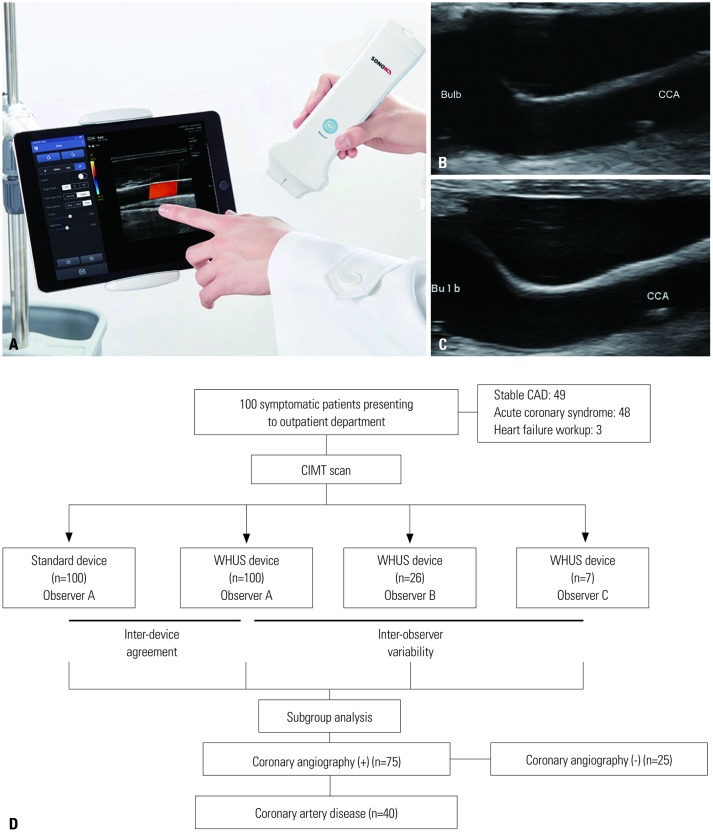
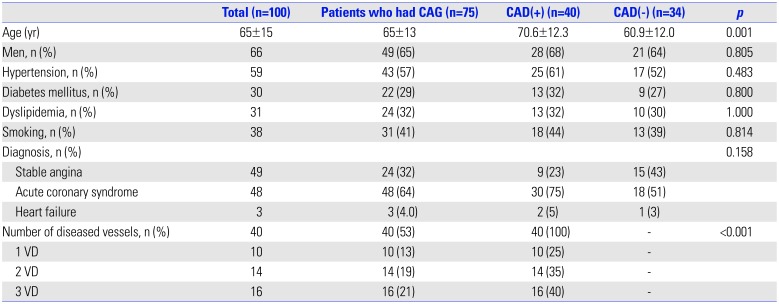
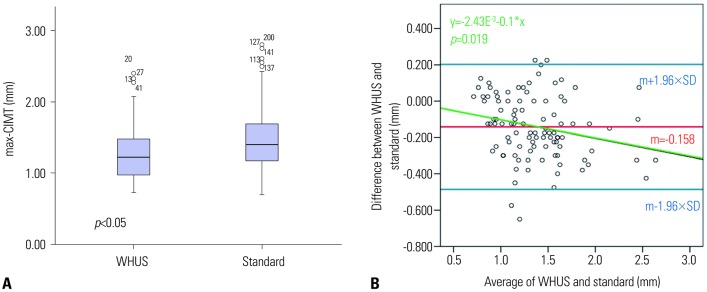


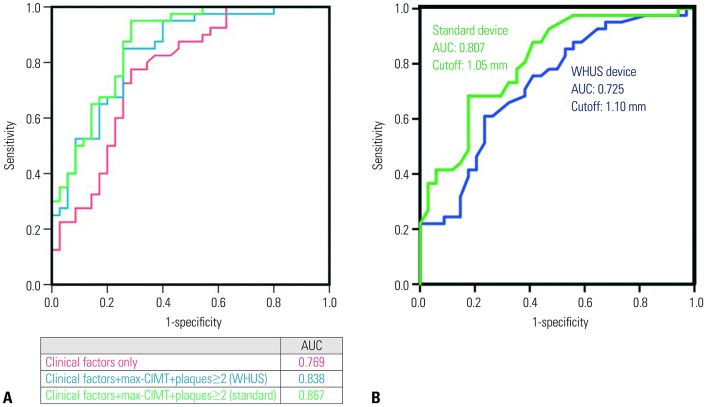





 PDF
PDF ePub
ePub Citation
Citation Print
Print



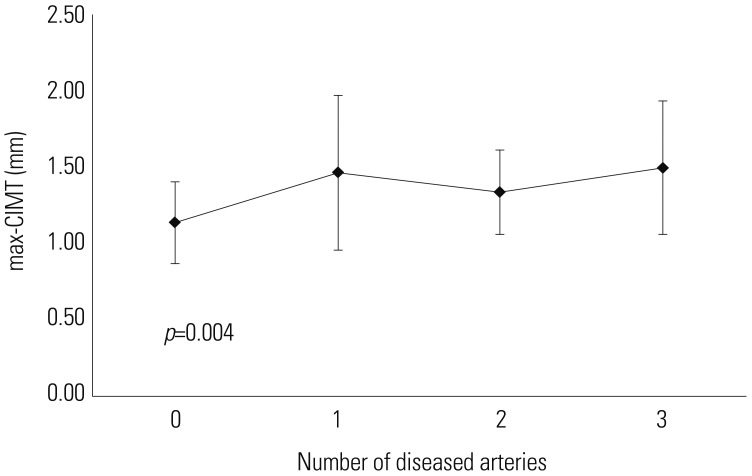
 XML Download
XML Download